Appreciating the structural engineering of the TU Delft library
- download the full article here.
As structural and building engineering students, we spend a lot of our time digesting formulas and watching (and re-watching!) technical lectures. This method of education is essential in the development of our engineering skills. However, much can be learnt from appreciating some of the engineering that surrounds us, structures that we pass by every day and never think twice about – the engineering under our noses. In this edition, we focus on a few aspects of the design of the TU Delft Library that make it an interesting focus for structural investigation and appreciation.
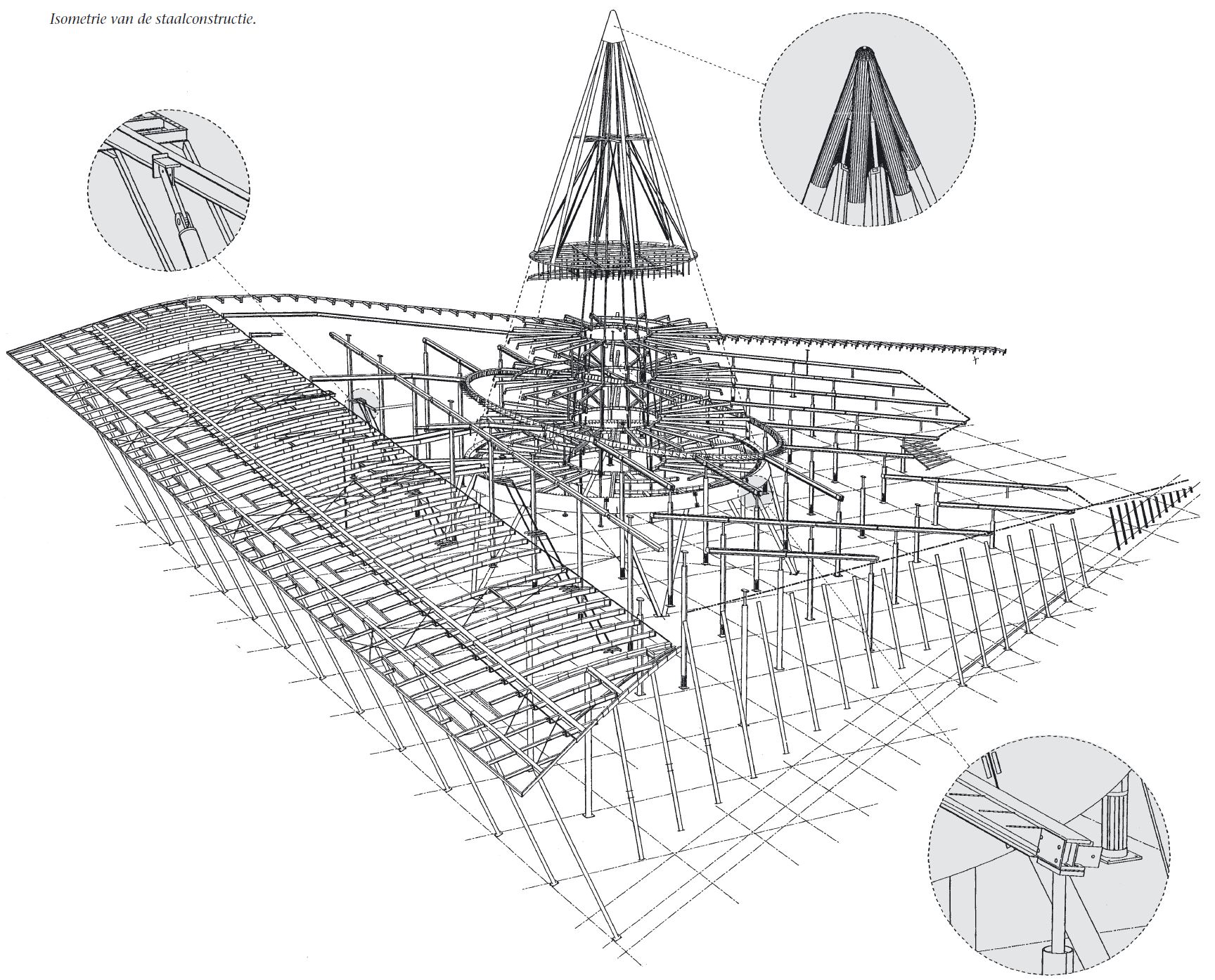
TU Delft Library Cone
Almost 30 metres in diameter at its base, the cone provides the library with four levels of studying space. It is almost completely isolated from the rest of the library structure, with a glass roof bridging the gap between its outside face and the green roof of the library. Through the eyes of a structural engineer, the iconic cone serves a crucial purpose, far more important than its intended vision for being a symbol of technical engineering.
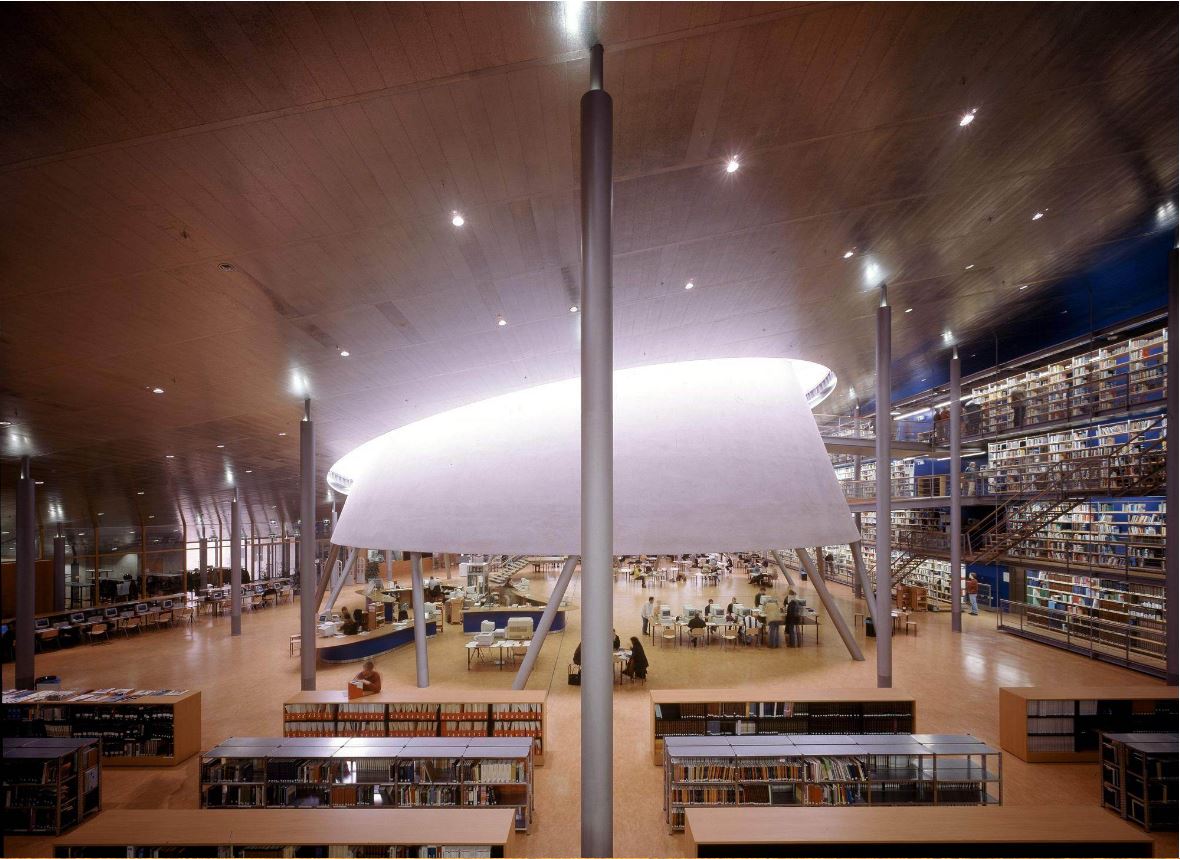
Each level of the cone has a circular void at its centre, however the base of the cone is only supported at its perimeter, enabling a vast column free space at ground floor. So how is the interior of each floor of the cone supported? Looking up through the void in the cone, you can easily spot six slender steel rods starting at the first suspended level and continuing up to the apex of the cone. These six rods suspend the four levels of composite flooring from the top of the steel cone.
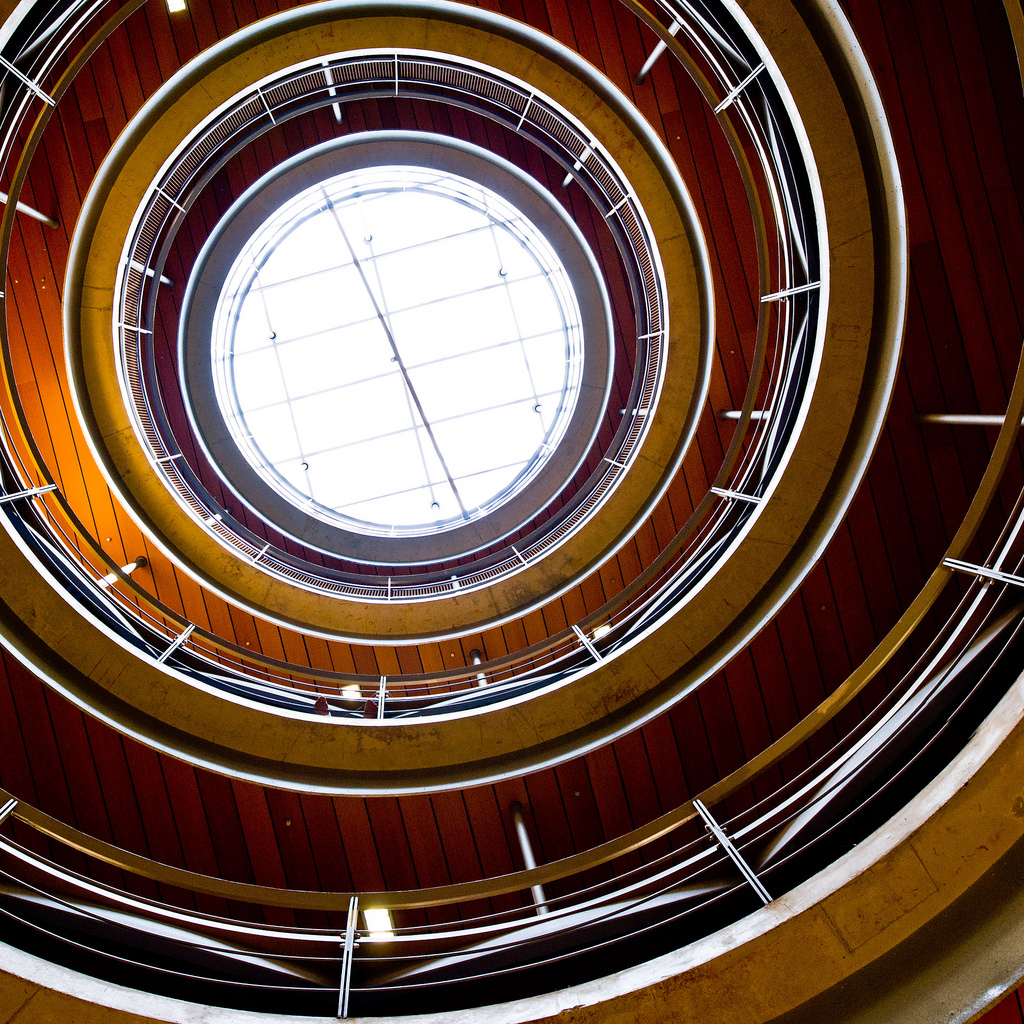
But what’s the idea behind that six-pointed star joining the column at the top of the cone? Conspiracy theorists would probably try to relate this to similar looking symbols of religion, but there’s probably a much simpler and less controversial explanation. Anyone that’s taken Steel Structures would know that a relatively slender steel column doesn’t have a significant compressive capacity owing to its tendency to buckle. Supporting four levels of concrete floor, plus a slight magnification in force owing to the inclination of the cone shape, these steel columns would have to be considerably stocky if they were designed for their entire 20 metre effective length. Perhaps the conception of this star shaped structure has more to do with lateral restraint and the geometry of the steel elements than it does with anything symbolic?
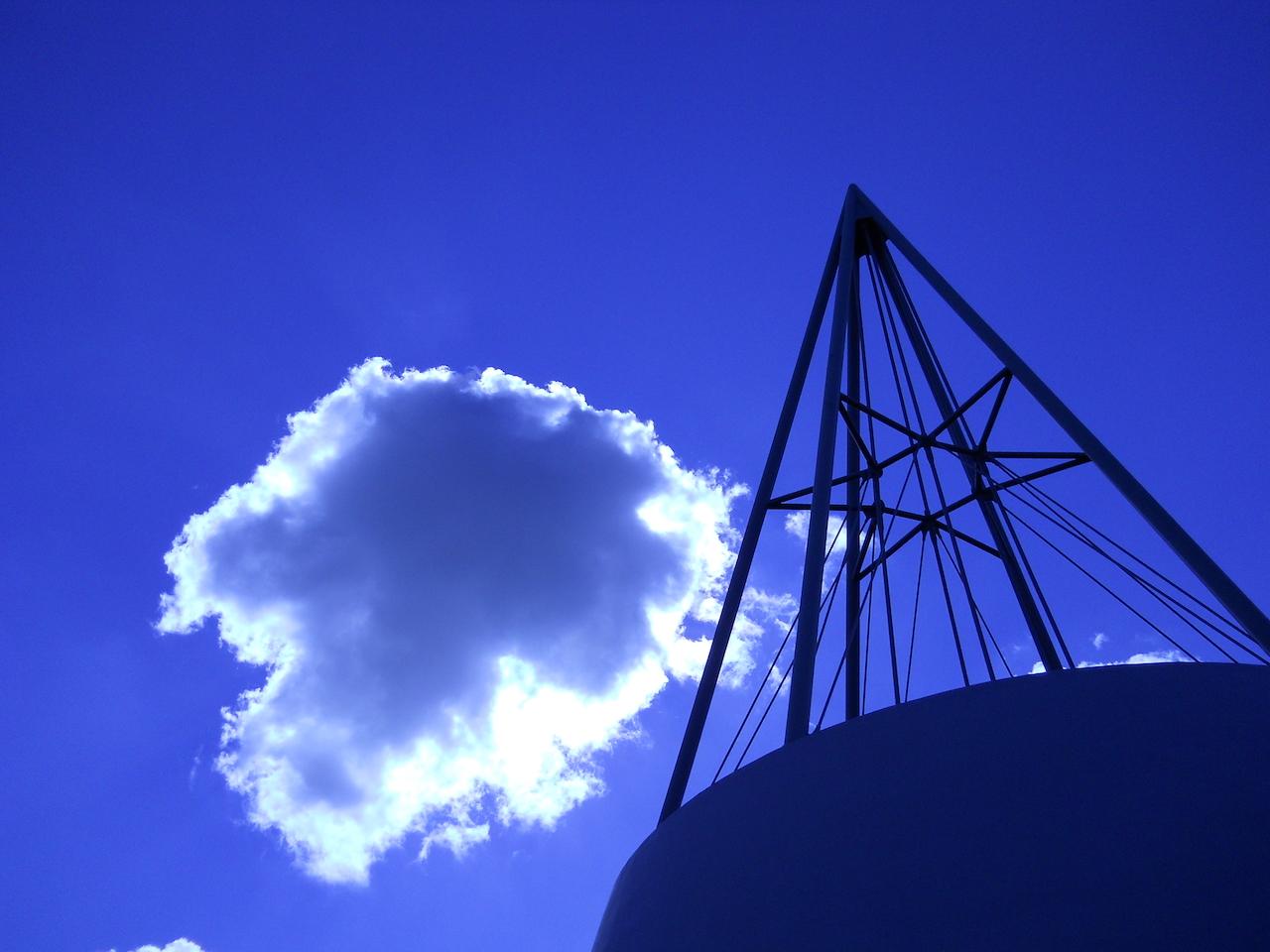
These two design features barely scratch the surface when it comes to the challenges the structural engineers of the TU Delft Library faced. While engineering feats are often hidden by architects, there are plenty more on display at the library and all over the campus. Maybe next time you’ve had enough of differential equations you can try to discover some of them yourself. Here are a few questions to get you started at the library:
- Why are the steel columns supporting the concrete cone inclined – architecturally driven or a stability necessity?
- What is the function of the rods connecting the bracing star to the top of the core?
- How are the floating book stacks supported and how is lateral stability achieved?
- Are structures suspended by slender rods more susceptible to dynamic vibrations than those with a typical column arrangement?
- How are the forces transferred from the tension rods to the steel columns at the apex of the cone?
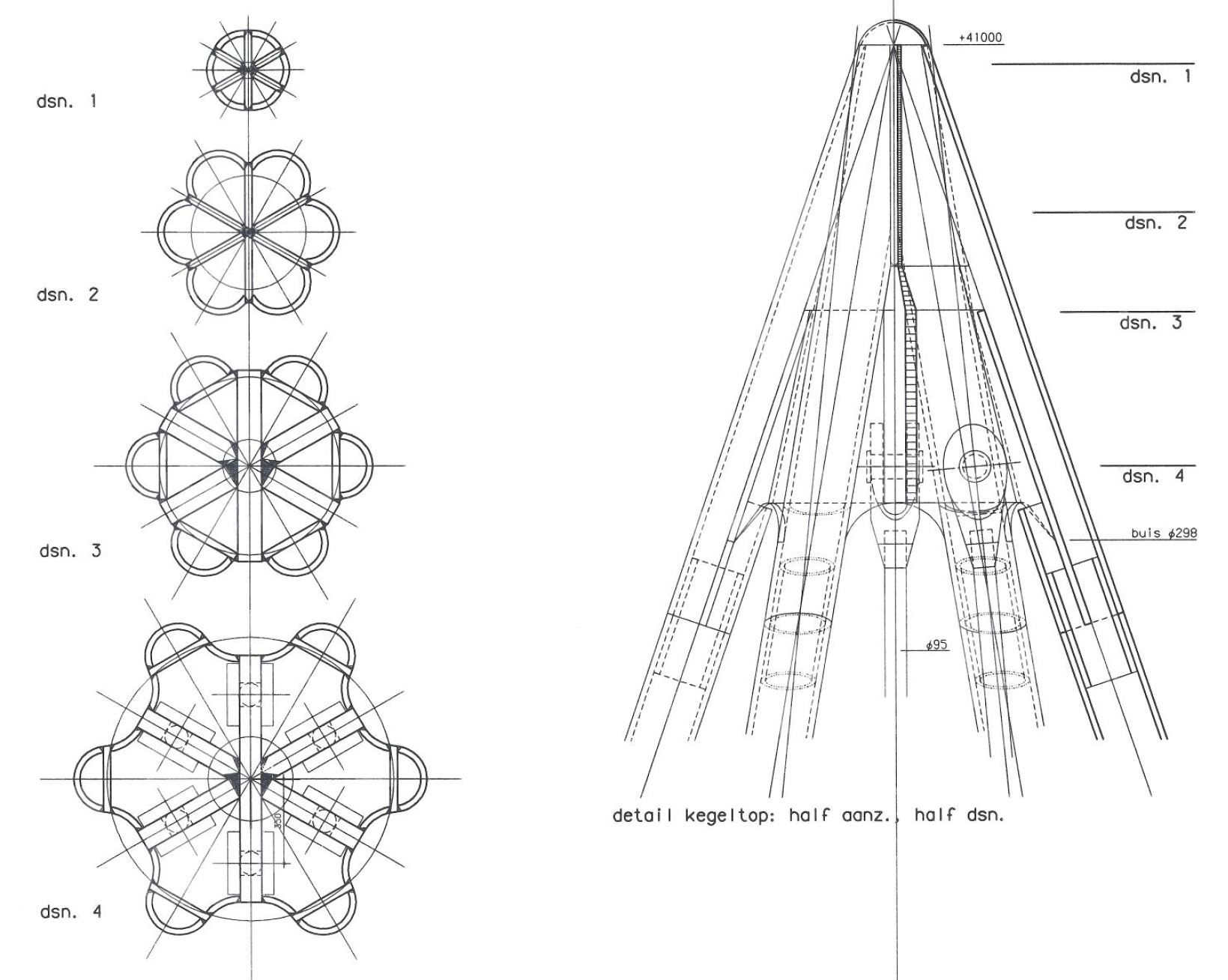
References:
- Krijgsman, H.G. & Spangenberg, W. (1997). Toppunt van leesplezier. Bouwen Met Staal, (139), 30-36.
- abt (1996). Bibliotheek T.U. Structural Drawings. 5.03v-5.04v.





Leave a comment